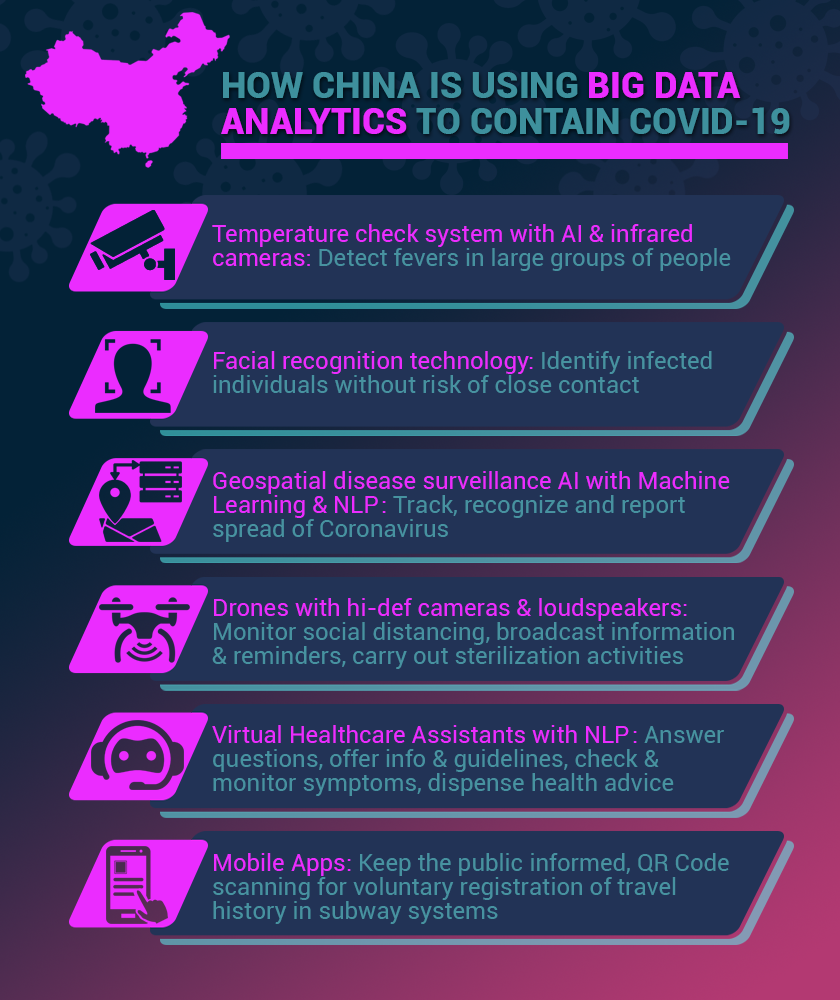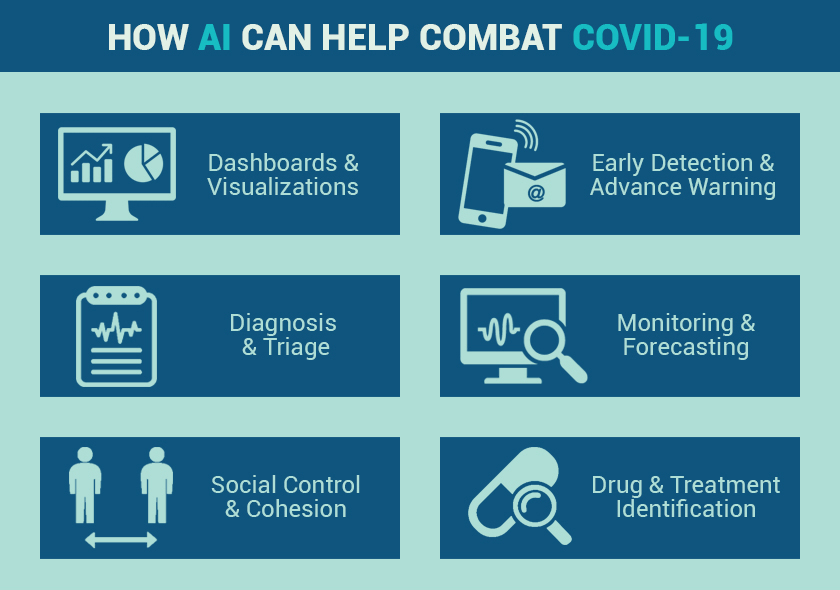There is no other way to put this: the Covid-19 pandemic has arrived and with grave, unsettling consequences. Not only is our health in jeopardy, but it has changed the very way we live. It has taxed health workers to their limits and brought the global economy to its knees. This virus knows no borders as it continues to spread because it is not so much a matter of “if” but “when”. While other nations are advocating social distancing or implementing some measure of movement restriction, China is gradually and cautiously returning to its daily operations.
China’s unprecedented public health response has witnessed a notable degree of success due in part to its leveraging on innovative technologies such as Big Data and Artificial Intelligence (AI). For starters, the pandemic had already generated tremendous amounts of data from a variety of sources such as mass symptom screening records, real-time virus tracking applications and hospital resource management systems. The overwhelming tidal wave of information crashing down is too much for humans to make sense of, much less analyze on their own.

To speed up the process, enter digital technology. In China, their Big Data approach to healthcare allows the country to match medical records with customs and immigration records to identify and test individuals who have recently traveled or sought medical care. This in turn enables the Chinese government to classify risk levels depending on a person’s travel history and determine potential hotspots that need to be locked down to prevent more coronavirus cases from breaking out.
China is also using Big Data to take advantage of its centralized government surveillance network through locational tracking via smartphone apps. This enables the nation to monitor movement of its citizens and regulate the quarantine of infected individuals, ensuring they do not leave their confinement areas. In the event that someone does leave, the app will be able to track their movement and send out a warning notification to the authorities. This strategy has seen a measure of success and is being implemented by other countries like Singapore, South Korea, Israel and Vietnam.
Meanwhile, hospitals in China are turning to AI-based diagnostics to accurately identify Covid-19 patients due to the shortfall of doctors. By integrating AI into their healthcare system, the software has the capability of thoroughly examining lung CT scans images to detect full or partial signs of the coronavirus. By working hand-in-hand with this AI-based system, doctors and nurses are able to devote more stretches actually treating infected patients rather than squandering critical periods identifying potentially infected individuals.

Furthermore, China has deployed cameras with AI-based multisensory technology at airports and hospitals. In one fell swoop, this move solves the issues of needing a human operator to be present when using thermal cameras while at the same time minimizing the possibility of human errors in judgment. With its utilization, this cutting-edge technology automatically detects those with high temperature – while tracking their movement and recognizing their faces – allowing Chinese government officials to take further action upon confirmation.
Right now, nations the globe over are looking at China to emerge out of the crisis, proving that the right technology and tools are the key to overcoming this pandemic. One important lesson to note is that countries looking to contain and end the coronavirus pandemic can hedge their bets on digital technology to help put a stop to this global catastrophe for good.
Please visit the WHO official website for more updates on the Covid-19 situation.

